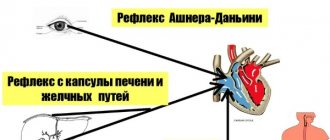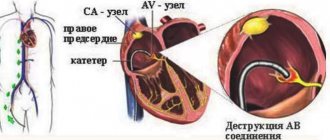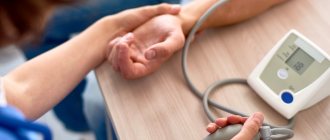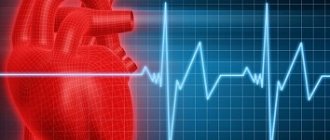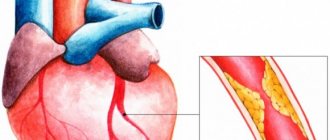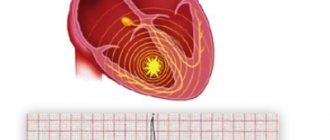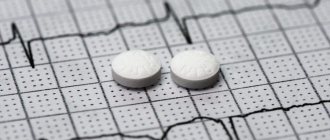Previously, psychosomatics was considered as a direction in psychology. Through it, experts explained the origin of diseases. Psychosomatics is a direction that shows the influence of the psyche on the body. The disease manifests itself physically, which means that it is based on a mental illness formed for a specific reason. This could be fear, lack of love or self-realization, unresolved problems and others.
At the moment, medicine is not so categorical about psychosomatics, since in reality it is impossible to explain the origin of some ailments from the medical side. An example of this is the famous “Chicago Seven” - a list of diseases that are considered originally psychosomatic. This also includes coronary heart disease and hypertension.
Psychosomatics of the heart
From a psychosomatic point of view, the heart is a symbol of love. If a person does not have heart disease, then he can love and accept love, live in joy. But if a person for some reason does not accept love, then this has a significant impact on the organ. Psychosomatics of the heart explains that it begins to work incorrectly, literally shrinks. This leads to a person becoming more rigid, cruel and heartless. And he begins to feel the first pains in his heart.
Cardiovascular diseases are the most common psychosomatic diseases. It has long been proven that individuals who experience negative emotions, simply put, pessimists, suffer more often from such ailments. Optimistic people can rest easy because they are not in the risk zone.
This can also be explained from a physiological perspective. The more negativity a person experiences, the higher his nervous overexcitation. Nerve endings that are located throughout the body carry tension to all parts of the body. The sympathetic nerve plexus, which is located in the heart, is especially affected by nervous overstrain. It is also transmitted to the organ, the functioning of which changes, which manifests itself through various diseases.
How to distinguish “healthy” tachycardia from “dangerous”?
Tachycardia and arrhythmia are physiological reactions of the heart to excessive stimulation of the nervous system.
Moreover, it often happens that the negative emotion itself seems to have already been experienced, and the heart’s reaction to it occurs after some time. This happens to those who are inclined, at the moment of psycho-emotional arousal, to restrain their feelings and suppress them.
This can happen from time to time in completely healthy people.
But the more often attacks of strong heartbeat occur, the greater the person’s confidence in his own serious condition.
This is how a psychosomatic disorder called cardiophobia develops.
Essentially, it is the intense fear of dying from heart disease. During an attack, a person begins to feel as if he is about to die.
How to distinguish such an imaginary attack from real heart problems, when urgent medical attention is needed? After all, tachycardia and arrhythmia occur both in those who urgently need to call an ambulance and in those who are physiologically healthy, but are in a state of panic.
Cardiophobia
Cardiophobia is a pure example of the “tachycardia - psychosomatics” phenomenon. Because here, besides internal experiences, there is nothing else.
- An attack of cardiophobia lasts from 5 minutes to an hour.
- With it, blood pressure invariably increases, breathing becomes deep, and excessive sweating is observed.
- The person remains conscious throughout the attack, is able to control his actions and, most importantly, he does not experience pain.
It is important to remember that cardiophobia can manifest itself vividly in those who suffer from irrational fears.
For example, fear of the dark, heights, fear of enclosed spaces, etc. In addition, according to scientific research, most often those who neglect physical activity and generally lead a less than healthy lifestyle suffer from such attacks of a healthy heart.
Heart attack
It may also be accompanied by tachycardia, but there are additional features that indicate the need to immediately call an ambulance. This:
- Severe pain or pressure in the chest area;
- Pain or numbness in the left arm;
- Feeling short of breath;
- Severe weakness, lightheadedness, fainting;
- Nausea or vomiting.
Psychosomatics of heart pain
If your heart hurts, you should think not about going to the hospital, but about what triggered it. A possible reason why the heart hurts may be the lack of love or its lack.
Those who suffered from a lack of attention and expression of warm feelings considered themselves unloved. The same thing can happen in adulthood, and a person may feel loved less or not loved at all. For the same reason, there is another, opposite concept - giving up love in exchange for career growth. Both suffer equally, which leads to diseases of the cardiovascular system.
HEART RHYTHM DISORDERS
Rhythm disturbances are usually “harmless” extrasystoles that do not affect hemodynamics, prognosis and life expectancy in a person with a healthy heart, but there are also severe, complex extrasystoles up to sinus block and complete atrioventricular block or ventricular flutter in severe heart disease.
Many heart diseases can lead to rhythm disturbances (coronary heart disease, cardiomyopathy, defects, cor pulmonale, (EC-syndrome), as well as extracardiac disorders and diseases (electrolyte disturbances, hyperthyroidism, hypovolemia, side effects of drugs, the influence of mental factors).
In case of disturbances in the conduction of excitation, it is necessary to distinguish the so-called nomotopic disorders emanating from the sinus nodes (sinus tachycardia, bradycardia, arrhythmia) from heterotopic disorders of the formation of excitation (supraventricular and ventricular extrasystoles). Impaired conduction of excitation is represented by various types of blocks depending on their location: subatrial block, atrioventricular block, bundle branch block. A special group is formed by pre-excitation syndromes, or pre-excitation syndromes (Wolf-Parkinson-White and Lown-Ganong-Levine syndromes).
Differential diagnosis of extrasystole is described in detail in textbooks of internal medicine.
Functional heart rhythm disturbances are considered as organ neurosis if an organic cause is excluded and clear psychological connections are identified. Functional disorders include only disturbances in the formation of excitation (sinus and supraventricular tachycardia, paroxysmal tachycardia, as well as attacks of atrial flutter, mono- and heterotopic extrasystoles). In case of disturbances in the conduction of arousal, psychosomatic connections are not identified.
Symptoms.
Tachycardia that occurs suddenly, lasts for minutes or hours, and suddenly disappears with a heart rate of 160 to 240 per minute is called paroxysmal tachycardia, or “jump of the heart.” At the same time, there is anxiety and a feeling of tension. With extrasystoles, the extrasystoles themselves are experienced less than the particularly strong heart beats that follow after the compensatory pause (“heart stumbling”).
A. Paroxysmal tachycardia (paroxysmal supraventricular tachycardia and paroxysmal atrial flutter) occurs in both diseased and healthy hearts; at a young age, its most common cause is psychovegetative disorders. An organic basis is noted in 30% of cases. Predisposition occurs when PQ
and Wolff-Parkinson-White syndrome.
Most often, attacks are triggered by situational factors and conflicts. In 25% of patients with a healthy heart, there is a close connection between the occurrence of an attack and life conflicts. Attacks often occur during periods of internal tension and during the accumulation of affect.
A 22-year-old girl experienced supraventricular paroxysmal tachycardia only when a certain young man asked her to dance. Somatic arousal and increased heart rate, anxiety, and rhythm disturbances take the place of a conflict of self-sacrifice and can be interpreted as fragments of a suppressed psychophysical reaction.
On a personal level, patients are more likely to be found who tend to control their feelings, suppress them, and view their manifestation as weakness. “I don’t show what’s happening to me.”
Patients tend to stubbornly defend their emotional world. At the same time, they avoid confrontation, struggle, disputes and are prone to rationalization. The situations that provoke an attack for them are situations of temptation, which are close to “emotional surrender” or, as in the example above, to hidden aggression, which, when the defense threatens to collapse, is discharged in the form of an attack.
B. Atrial, atrioventricular and venticular extrasystolia can occur affectively while awake, but more often during sleep.
A 53-year-old patient developed cardiophobic symptoms after a television broadcast about the Kennedy assassination. During the first psychoanalytic interview, pulse rate and ECG were assessed using the telemetric method. At the same time, persistent bigeminy was noted if the expressed feelings of hatred and guilt were associated with the patient’s wife. General psychosomatic situation: early loss of father and first stepfather at the age of two or three years. In the Oedipal phase, he experienced cruel treatment from his second stepfather. Re-experiencing this traumatic situation arose during sexual relations with his wife; in connection with this, both cardiac symptoms and long-lasting bigeminy arose at the mention of the conflict [P. Hahn et al., 1981].
Organically caused extrasystoles can intensify with emotional needs, and then they lead to increased suspiciousness and hypochondriacal processing. The feeling of irregular heart beats may be a prerequisite for hypochondriacal interpretations. The perception of the heart as the site of damage, as well as the awareness that one cannot arbitrarily influence the vital processes occurring in the middle of the body, further contribute to such processing.
A 66-year-old patient, a retired judge, had been showing signs of an ischemic lesion on the left ECG for many years, sometimes with ventricular extrasystoles. During his spring vacation in Spain, he experienced frequent extrasystoles. He immediately interrupted his vacation, could not get rid of the thought of a myocardial infarction, exhibited an unusual tendency for him to panic, and felt old and incapacitated. After returning, he did not leave his home, controlled his pulse, heartbeats, was depressed and completely fixated on his heart and its work. With the help of very caring children, the patient was able to be taken out of the house and began to be trained through walks within the immediate surroundings. His somatic data objectively remained unchanged for several years. In retrospect, it could be concluded that the irregularity of cardiac activity was caused by an alien environment, the uncertainty that his appeal would be correctly understood and the necessary care would be provided to him, which led to such a painful condition, which gradually returned to normal over the course of several weeks.
Cardiovascular diseases and psychosomatics
The most common ailments considered psychosomatic are:
- Cardiac arrhythmia;
- Essential arterial hypertension;
- Cardiac neurosis;
- Tachycardia and angina;
- IBS.
In psychosomatics, the heart is an organ associated with love. It’s not for nothing that the loss of loved ones or the end of a relationship leads to heartache. The reason for this is changes in the organ at the physiological level. These changes also occur during times of fear, anger and sadness.
During the release of adrenaline with a toxin, blood vessels narrow, the heart rate increases, which leads to a feeling of fear and anxiety. Frequent narrowing of blood vessels leads to pressure surges. It turns out that increased anxiety irreversibly leads to illnesses of an important human organ.
Hostility is suppressed, and suppressing any of your emotions has a negative impact on the state of the heart. Those people who take on all the difficulties and solve all the problems are slowly but surely moving towards arterial hypertension.
Frequent increased anxiety, which can occur for many reasons. A tense family situation, constant quarrels and showdowns lead to the formation of a high level of anxiety. Then there is high or low blood pressure, nausea and dizziness. These symptoms are very similar to ischemic heart disease. The psychosomatics of myocardial infarction has the same causes and consequences, but these are manifestations of cardiac neurosis. Its difference is that it can occur in tandem with panic attacks.
What is the mechanism of occurrence of such disorders?
Both real psychosomatic disorders of the cardiac spectrum and imaginary ones have a similar mechanism for the appearance of cardiac disorders.
In fact, all heart problems are psychosomatic.
- It all starts with a strong emotional reaction to fear, anger, aggression, rage, conflict, resentment, disappointment, etc.
- After the appearance of an emotional factor, the body immediately reacts to it with changes in cardiac activity.
- Tension appears in the circulatory system, and stress hormones (adrenaline, norepinephrine and cortisol) are released into the blood.
- Due to excess stress hormones, vasoconstriction occurs, which causes the heart to contract faster.
- Not only does the physiological symptom itself appear - rapid heartbeat, but also a feeling of severe anxiety and restlessness.
If these feelings are not recognized in time, then a vicious circle results: stress - adrenaline release - strong heartbeat - anxiety about the strong heartbeat - an even greater adrenaline release - thoughts about your own serious condition. After several such attacks of tachycardia, most people develop a strong fear of the attack itself. And this makes the situation even worse.
Psychosomatic causes of arrhythmia
Malfunctions of the heart are the main sign that a person has lost his way in life. There is only one way out - listen to yourself. Arrhythmia is a malfunction of the blood pumping organ, which for some reason has lost its rhythm. Perhaps this is due to a busy life, or imposed rules that are not to your liking. The psychosomatics of cardiac arrhythmia is also associated with the constant bustle and speed of life.
Fear and anxiety are constant companions of a person. They master it so much that the organ cannot stand it and loses its normal rhythm. Such a person may experience constant jumps in the number of strokes. They can be either higher than normal or lower.
Treatment methods from the perspective of psychosomatics
If traditional treatment methods do not help get rid of arrhythmia, and the disease does not leave a person alone, then you can be sure that the cause lies in psychosomatics.
Arrhythmia caused by nerves can be cured using the following methods:
- Breathing exercises. Relaxing deep breathing will help cope with stress and make your heart rate less frequent.
- For psychosomatic arrhythmia, music therapy helps to relax. Calm, soothing music can have a positive effect on the nervous system.
- Also, with this disease, it is recommended to reconsider your diet. Fatty foods rich in cholesterol should be excluded from it. Preference should be given to fruits and foods rich in proteins.
- You can try acupuncture as an alternative treatment.
In addition to the methods described above, the doctor may advise getting rid of neurological arrhythmia using folk remedies.
One of the most effective, positively influencing the elimination of psychosomatic causes of illness, is a decoction of various herbs. To prepare it, you need to mix sage, cudweed, hawthorn, motherwort and oregano in proportions 1:2:1:2:2. The finished mixture should not exceed one tablespoon in quantity. Next, it should be poured with boiling water in an amount of 200 ml, then the broth should be heated in a water bath for up to 15 minutes, set aside and let it brew for at least 20 minutes. You need to drink the resulting composition for one and a half months, half a glass twice a day.
Angina pectoris and psychosomatics
Angina is characterized by a lack of blood in one area of the heart. It turns out that the body does not receive a certain amount of it, which then leads to ischemia. And if you do nothing further, then necrosis is guaranteed.
Dislike for yourself and others, lack of values and dislike for your own life leads to such a terrible diagnosis. Such people are not sincerely interested in others and do not experience joy or pity. They are protected from the world by a thick wall.
Psychosomatic pain in the heart, which is diagnosed as angina pectoris, can also occur in hypersensitive people. They are used to taking all the pain upon themselves.
How to treat correctly
Treatment involves a psychotherapeutic and medication approach. Since the root of the problem is related to a psychological problem, it is worth starting treatment with a psychotherapist. It will help the patient work through a long-standing problem, thereby relieving him of suffering.
But since there are already consequences in the form of diseases, it is impossible to do without consulting a cardiologist. Prescribed medications will help eliminate unpleasant symptoms. You should not rely on only one option, since to cure psychosomatic arrhythmia which is associated with an incorrect rhythm of life, a person will need to learn to love himself and others, to accept love, depending on the disease.

